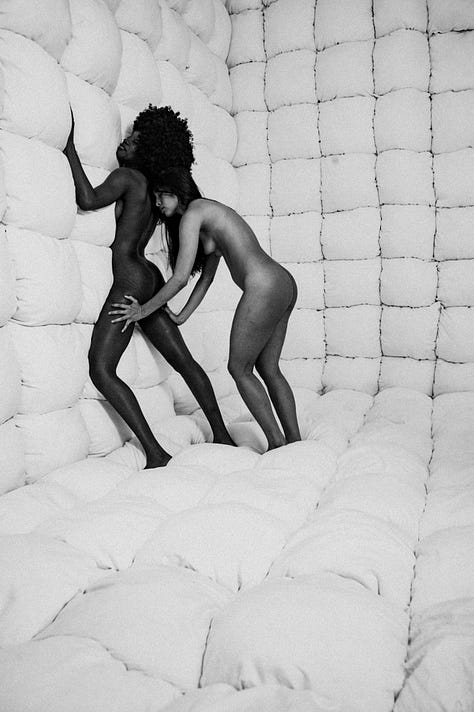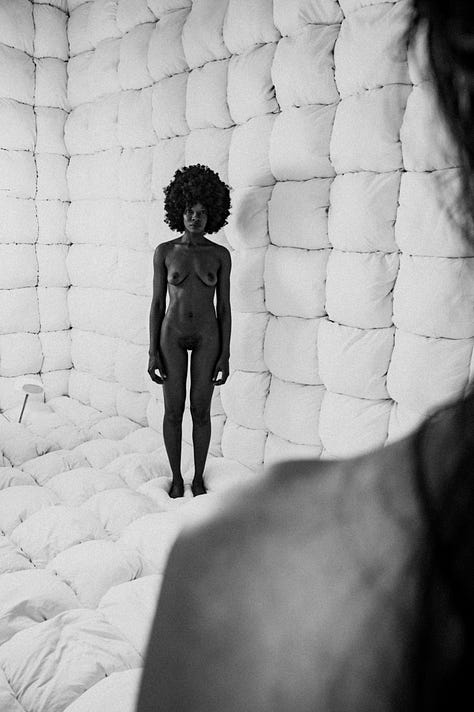Sparsha Puja in a Mental Institution
When life changes profoundly, you might forget it all began with Sparsha Puja.
“Madness is the mirror in which man sees his own features.”
— Michel Foucault, Madness and Civilization
Sparsha Puja has been a profound journey for me, delving deep into the unconscious layers of human experience. It’s not just a ritual of touch—it’s an exploration of the very genetics of human evolution. Since the early days of Forbidden Yoga, I’ve been immersed in Sparsha Puja (स्पर्श पूजा), witnessing its subtle yet transformative impact on those who truly engage with it.
What’s disheartening is seeing how some individuals have taken this sacred practice and misused it. They’ve stolen it—yes, stolen—not just by replicating the movements but by stripping away its essence and offering it in their own retreats without understanding its true purpose. Sparsha Puja isn’t a tantric ritual designed to bring people closer in a superficial sense. It’s not about eye gazing, finding the Shiva (शिव) and Shakti (शक्ति) within each other, or simply being nice. It’s about delving into the depths of human interaction, an anthropological self-discovery that unlocks the knowledge of mankind.
Sparsha Puja works within the unconscious, often defying immediate comprehension or expectation. It’s not confined to a specific modality or sequence. It can manifest in unexpected ways, and sometimes, its effects are felt years later when life changes subtly and profoundly, and you realize those seeds were planted during the ritual.
The practice involves moving through different variations of touch, starting with seeing someone for the first time—touching through the eyes. These steps, like Spriṣṭaka (स्पृष्टक), Haṣṭaka (हष्टक), Viddhaka (विद्धक), Uddhriṣṭaka (उद्धृष्टक), Gharṣātaka (घर्षातक), and Pīḍitaka (पीडितक), can even be found in the Kama Sutra. But there, they’re presented in a dry manner, lacking the profound integration with subtle pranayama (प्राणायाम) techniques that we employ. These breathing practices are not mere additions; they’re integral, guiding us deeper into the experience.
At its core, Sparsha Puja is about observing the vrittis (वृत्ति)—the fluctuations of the mind. After moving through the different forms of touch, we engage in dharana (धारणा), concentrating intensely on these mental patterns. Through a combination of puraka (पूरक, inhalation), antar kumbhaka (अन्तर कुम्भक, internal breath retention), and rechaka (रेचक, exhalation), we work to remove these vrittis from ourselves and our practice partners. It’s a profound process that goes beyond physical interaction, delving into the mental and spiritual realms.
As the Yoga Sutras state: “योगश्चित्तवृत्तिनिरोधः” (Yogaś citta-vṛtti-nirodhaḥ) — “Yoga is the cessation of the fluctuations of the mind.”
What puzzles me is why people don’t ask me about the deeper aspects of Sparsha Puja. They take the practice, attempt to replicate it, but miss its essence entirely. This tradition thrives on curiosity and the willingness to delve deeper. It’s not that I hold all the answers, but I’m dedicated to preserving the purity of this practice. Understanding Sparsha Puja requires studying the ten senses of Tantra—the Chanendriyas (ज्ञानेन्द्रिय) and Kamendriyas (कर्मेन्द्रिय). Without this foundational knowledge, the practice loses its meaning.
As stated in ancient texts: “Beyond the senses (indriyas) are the objects; beyond the objects is the mind; beyond the mind is the intellect; beyond the intellect is the Self.” — Katha Upanishad
Looking back at photographs I took almost twenty years ago in Vienna, I realize that even then, I was capturing something profound, even if I didn’t fully understand it at the time. Those images still resonate with me—they hold a certain mystery and depth that words alone can’t convey.
Sparsha Puja is like a Pandora’s box. It’s not about immediate results or surface-level experiences. It works within the unconscious, unlocking knowledge and insights that may only become apparent years later. It’s about tapping into the collective wisdom of humanity, accessing something ancient and deeply ingrained within us.









For anyone encountering Sparsha Puja—perhaps in a retreat or workshop—I urge you to approach it with genuine curiosity and respect. Don’t settle for superficial interpretations or mimicry. Ask questions, seek to understand its true purpose, and be open to the profound journey it offers. This isn’t a path for those looking for quick fixes or easy answers. It’s a lifelong exploration that requires dedication and a willingness to embrace the unknown.
In preserving Sparsha Puja, I aim to keep its essence intact, sharing it with those who are truly ready to explore its depths. It’s not about ownership or exclusivity; it’s about honoring a sacred tradition that has the power to transform lives in subtle, profound ways.
For a small monthly contribution, you will receive many more photographs, and it will be easier to understand the entire picture of the forbidden yoga tantric tradition based in the Vamachara left-handed Shakta universe. You can either subscribe for free or contribute to our work with a small monthly contribution. Thank you.














